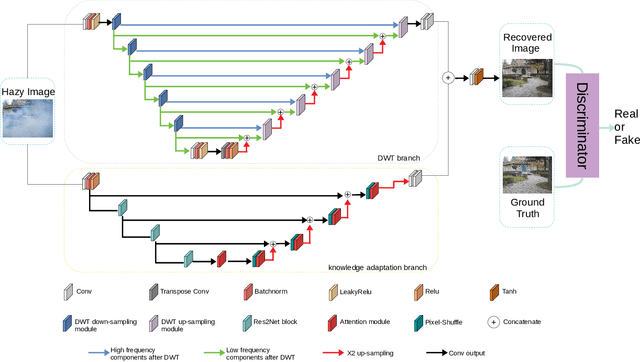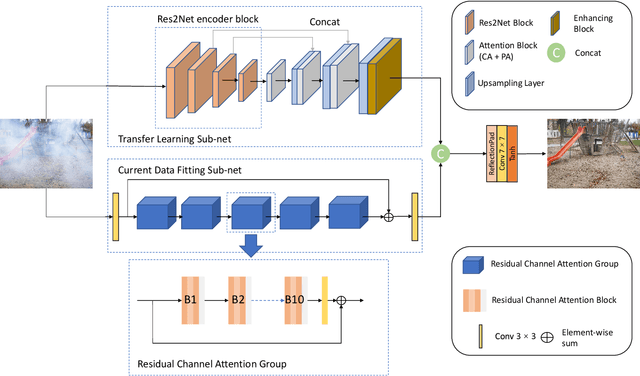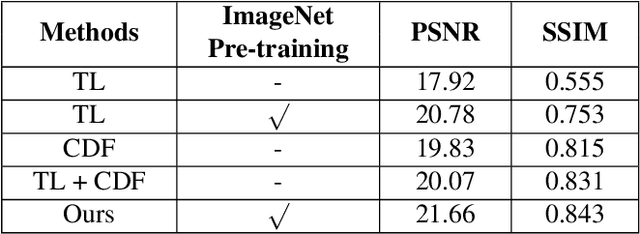Yankun Yu
DW-GAN: A Discrete Wavelet Transform GAN for NonHomogeneous Dehazing
Apr 18, 2021



Abstract:Hazy images are often subject to color distortion, blurring, and other visible quality degradation. Some existing CNN-based methods have great performance on removing homogeneous haze, but they are not robust in non-homogeneous case. The reasons are mainly in two folds. Firstly, due to the complicated haze distribution, texture details are easy to be lost during the dehazing process. Secondly, since the training pairs are hard to be collected, training on limited data can easily lead to over-fitting problem. To tackle these two issues, we introduce a novel dehazing network using 2D discrete wavelet transform, namely DW-GAN. Specifically, we propose a two-branch network to deal with the aforementioned problems. By utilizing wavelet transform in DWT branch, our proposed method can retain more high-frequency knowledge in feature maps. In order to prevent over-fitting, ImageNet pre-trained Res2Net is adopted in the knowledge adaptation branch. Owing to the robust feature representations of ImageNet pre-training, the generalization ability of our network is improved dramatically. Finally, a patch-based discriminator is used to reduce artifacts of the restored images. Extensive experimental results demonstrate that the proposed method outperforms the state-of-the-arts quantitatively and qualitatively.
A Two-branch Neural Network for Non-homogeneous Dehazing via Ensemble Learning
Apr 18, 2021



Abstract:Recently, there has been rapid and significant progress on image dehazing. Many deep learning based methods have shown their superb performance in handling homogeneous dehazing problems. However, we observe that even if a carefully designed convolutional neural network (CNN) can perform well on large-scaled dehazing benchmarks, the network usually fails on the non-homogeneous dehazing datasets introduced by NTIRE challenges. The reasons are mainly in two folds. Firstly, due to its non-homogeneous nature, the non-uniformly distributed haze is harder to be removed than the homogeneous haze. Secondly, the research challenge only provides limited data (there are only 25 training pairs in NH-Haze 2021 dataset). Thus, learning the mapping from the domain of hazy images to that of clear ones based on very limited data is extremely hard. To this end, we propose a simple but effective approach for non-homogeneous dehazing via ensemble learning. To be specific, we introduce a two-branch neural network to separately deal with the aforementioned problems and then map their distinct features by a learnable fusion tail. We show extensive experimental results to illustrate the effectiveness of our proposed method.
 Add to Chrome
Add to Chrome Add to Firefox
Add to Firefox Add to Edge
Add to Edge